
Film Booking Offices of America (FBO), registered as FBO Pictures Corp., was an American film studio of the silent era, a midsize producer and distributor of mostly low-budget films. The business began in 1918 as Robertson-Cole, an Anglo-American import-export company. Robertson-Cole began distributing films in the United States that December and opened a Los Angeles production facility in 1920. Late that year, R-C entered into a working relationship with East Coast financier Joseph P. Kennedy. A business reorganization in 1922 led to its assumption of the FBO name, first for all its distribution operations and ultimately for its own productions as well. Through Kennedy, the studio contracted with Western leading man Fred Thomson, who grew by 1925 into one of Hollywood's most popular stars. Thomson was just one of several silent screen cowboys with whom FBO became identified.
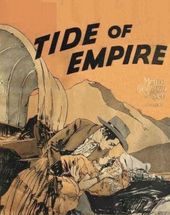
Tide of Empire is a 1929 American synchronized sound Western film directed by Allan Dwan and starring Renée Adorée and Tom Keene. While the film has no audible dialog, it was released with a synchronized musical score with sound effects using both the sound-on-disc and sound-on-film process.
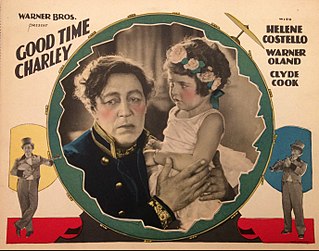
Good Time Charley is a 1927 American synchronized sound drama film produced and distributed by Warner Bros. and directed by Michael Curtiz. While the film has no audible dialog, it was released with a synchronized musical score with sound effects using the Vitaphone sound-on-disc process. It was considered to be a lost film. However, as of January 2021, the film is listed as extant at the Library of Congress.
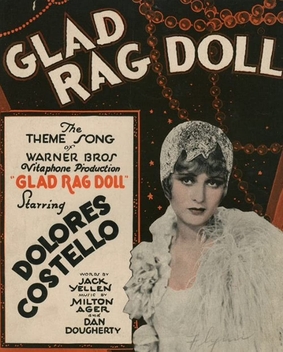
Glad Rag Doll is a 1929 American sound part-talkie pre-Code drama film directed by Michael Curtiz, and starring Dolores Costello, Ralph Graves, and Audrey Ferris. In addition to sequences with audible dialogue or talking sequences, the film features a synchronized musical score and sound effects, along with English intertitles. The soundtrack was recorded using the Vitaphone sound-on-disc system. This is one of many lost films of the 1920s, no prints or Vitaphone discs survive, but the trailer survives. The film's working title was Alimony Annie, but was changed match the title of the theme song. The theme song is entitled Glad Rag Doll both played and sung throughout the soundtrack.

The Little Snob is a 1928 synchronized sound comedy film from Warner Bros. While the film has no audible dialog, it was released with a synchronized musical score with sound effects using the sound-on-disc Vitaphone process.
Two Lovers is a 1928 American synchronized sound historical drama film directed by Fred Niblo. While the film has no audible dialog, it was released with a synchronized musical score with sound effects using both the sound-on-disc and sound-on-film process. The film stars Vilma Bánky, Ronald Colman, and Noah Beery. Based on the novel Leatherface: A Tale of Old Flanders by Baroness Emma Orczy, it was produced by Samuel Goldwyn.

The Cohens and the Kellys in Atlantic City is a 1929 American sound part-talkie comedy film directed by William James Craft and starring George Sidney, Vera Gordon and Mack Swain. In addition to sequences with audible dialogue or talking sequences, the film features a synchronized musical score and sound effects along with English intertitles. The soundtrack was recorded using the Western Electric sound-on-film system. The film is the third entry in the series which began with The Cohens and Kellys, inspired by a play by Aaron Hoffman. Location shooting took place in Atlantic City. Originally shot as a synchronized film without dialogue, some talking sequences were later added at Universal Studios.

Back Home and Broke is a lost 1922 American silent comedy film directed by Alfred E. Green and written by George Ade and J. Clarkson Miller. The film stars Thomas Meighan, Lila Lee, Frederick Burton, Cyril Ring, Charles S. Abbe, Florence Dixon, and Gertrude Quinlan. The film was released on December 24, 1922, by Paramount Pictures.

Caught is a 1931 American Pre-Code Western film directed by Edward Sloman and written by Agnes Brand Leahy and Keene Thompson. The film stars Richard Arlen, Louise Dresser, Frances Dee, Tom Kennedy, and Syd Saylor. The film was released on August 8, 1931, by Paramount Pictures.

Ham and Eggs at the Front is a 1927 American synchronized sound comedy film directed by Roy Del Ruth and starring Tom Wilson, Heinie Conklin and Myrna Loy - all in blackface. While the film has no audible dialog, it was released with a synchronized musical score with sound effects using the Vitaphone sound-on-disc process. Long thought to be a lost film, a print was screened at the Pordenone Silent Film Festival in 2021 courtesy of the Cineteca Italiana.

The Better 'Ole is a 1926 American synchronized sound World War I comedy drama film. Released by Warner Bros. Pictures, Inc., this film is the second full-length film to utilize the Vitaphone sound-on-disc process, two months after the first Vitaphone feature Don Juan; with no audible dialogue, the film does have a synchronized musical score and sound effects. This film was also the second onscreen adaptation of the 1917 musical The Better 'Ole by Bruce Bairnsfather and Arthur Elliot. Charlie Chaplin's eldest brother Sydney Chaplin played the main lead as Old Bill in perhaps his best-known film today. This film is also believed by many to have the first spoken word of dialog, "coffee", although there are those who disagree. At one point during the film, Harold Goodwin's character whispers a word to Sydney Chaplin which is also faintly heard. This was discovered by the UCLA's Robert Gitt, during the restoration of the sound discs for the film. The line was recorded in perfect sync, apparently during the orchestra recording sessions rather than live on set, therefore making it the earliest known use of dubbing in a motion picture.

Man, Woman and Wife is a 1929 American sound drama film directed by Edward Laemmle and starring Norman Kerry, Pauline Starke and Marian Nixon. While the film has no audible dialog, it was released with a synchronized musical score with sound effects using both the sound-on-disc and sound-on-film process. It was based on a short story called Fallen Angels, and the film was also sometimes known by this title.

Atta Boy is a 1926 American silent comedy film directed by Edward H. Griffith and starring Monty Banks, Virginia Bradford, and Ernest Wood.

The Spieler is a 1928 American sound part-talkie drama film directed by Tay Garnett and starring Alan Hale, Clyde Cook and Renée Adorée. While the film had a few sequences with audible dialog, the majority of the film featured a synchronized musical score with sound effects using both the sound-on-disc and sound-on-film process. The film's sets were designed by the art director Edward C. Jewell.
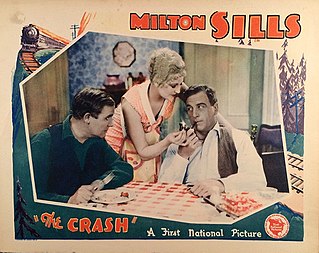
The Crash is a 1928 American synchronized sound drama film directed by Edward F. Cline and starring Milton Sills, Thelma Todd and Wade Boteler. While the film has no audible dialog, it was released with a synchronized musical score with sound effects using the sound-on-disc Vitaphone process.

High and Handsome is a 1925 American silent drama film directed by Harry Garson and starring Maurice 'Lefty' Flynn, Ethel Shannon, and Tom Kennedy.
Dr. Jim is a 1921 American silent drama film directed by William Worthington and starring Frank Mayo, Claire Windsor and Robert Anderson.

No Control is a 1927 American silent comedy film directed by Scott Sidney and starring Harrison Ford, Phyllis Haver and Jack Duffy. Due to the public apathy towards silent films, a sound version was also prepared in 1928. While the sound version has no audible dialog, it was released with a synchronized musical score with sound effects using both the sound-on-disc and sound-on-film process.

Sir Lumberjack is a 1926 American silent drama film directed by Harry Garson and starring Maurice 'Lefty' Flynn, Kathleen Myers, and Tom Kennedy.
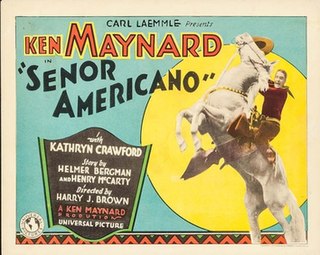
Señor Americano is a 1929 American sound part-talkie western film directed by Harry Joe Brown and starring Ken Maynard, Kathryn Crawford and Frank Beal. While the film has a few talking sequences, the majority of the film featured a synchronized musical score with sound effects. It was distributed by Universal Pictures. Produced during the transition to sound, it was released in both sound and silent versions.


















